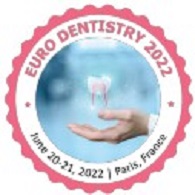
Dr. Sara F El Shafei
Lecturer of Prosthodontics at the faculty of Dentistry, The British University in Egypt.
Title: OSSEOINTEGRATED IMPLANTS VERSUS ZIRCONIUM MUCOSAL INSERTS IN COMPLETE DENTURE PATIENTS
Biography
Biography: Dr. Sara F El Shafei
Abstract
Statement of the problem: Completely edentulous patients have always faced a compromised style of life owing to their edentulism. The conventional treatment option; conventional complete denture construction may not always be satisfying to these patients, particularly in terms of retention and stability. Implant overdentures are a successful treatment option for these patients; however not all edentulous patients possess the suitable bone quantity and quality for osseointegrated implants and they might require complex preprosthetic surgical procedures to do so, like bone grafting, thereby increasing the complexity and morbidity of the treatment plan. Thus arose the need for an alternative and more conservative treatment option; mucosal inserts. Classified as an implant category, mucosal inserts have been used for a long time. Their use has declined for a few decades after the emergence of osseointegrated implants and their proven success, but they re-emerged again as a conservative treatment option with the recent release of a new type of inserts made of zirconium. The purpose of this study is to compare the effect of zirconium mucosal inserts versus that of endosteal osseointegrated implants on maxillary overdenture supporting structures, particularly maxillary bone. Methodology: Twelve male completely edentulous patients were selected for this study and divided into two groups of six. Group I received four osseointegrated implants retaining maxillary overdentures, while group II received maxillary overdentures retained by eight muchor zirconium mucosal inserts. Bone changes in both groups were measured and evaluated using cone beam ct at the time of insertion and after six and twelve months.
Results: : The results showed that the bone changes produced in mucosal overdenture wearers were greater than those produced in implant overdenture wearers.
Conclusion and significance : Zirconium mucosal inserts caused more bone changes than osseointegrated implants, making the latter a more advantageous treatment option when indicated.

